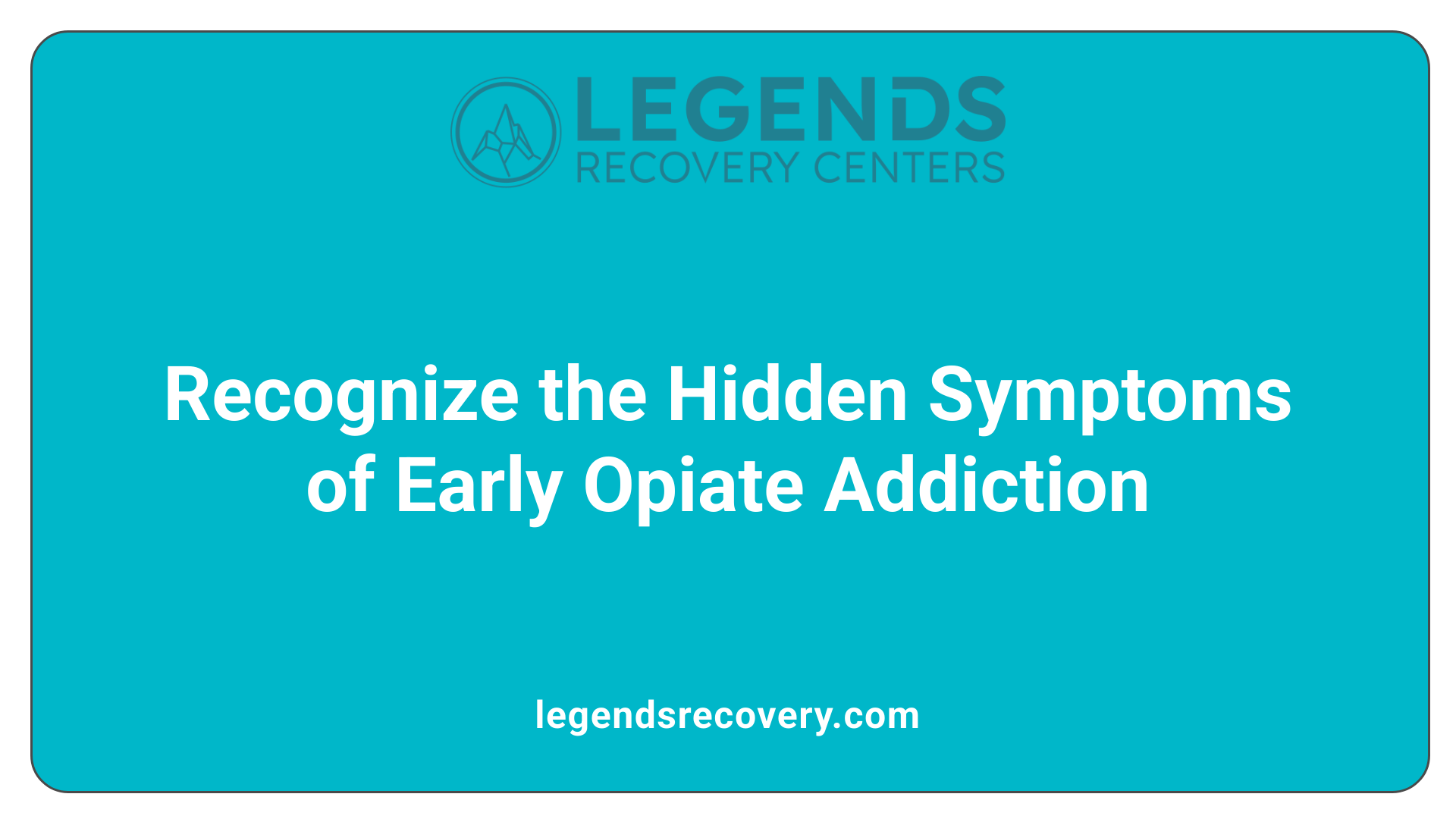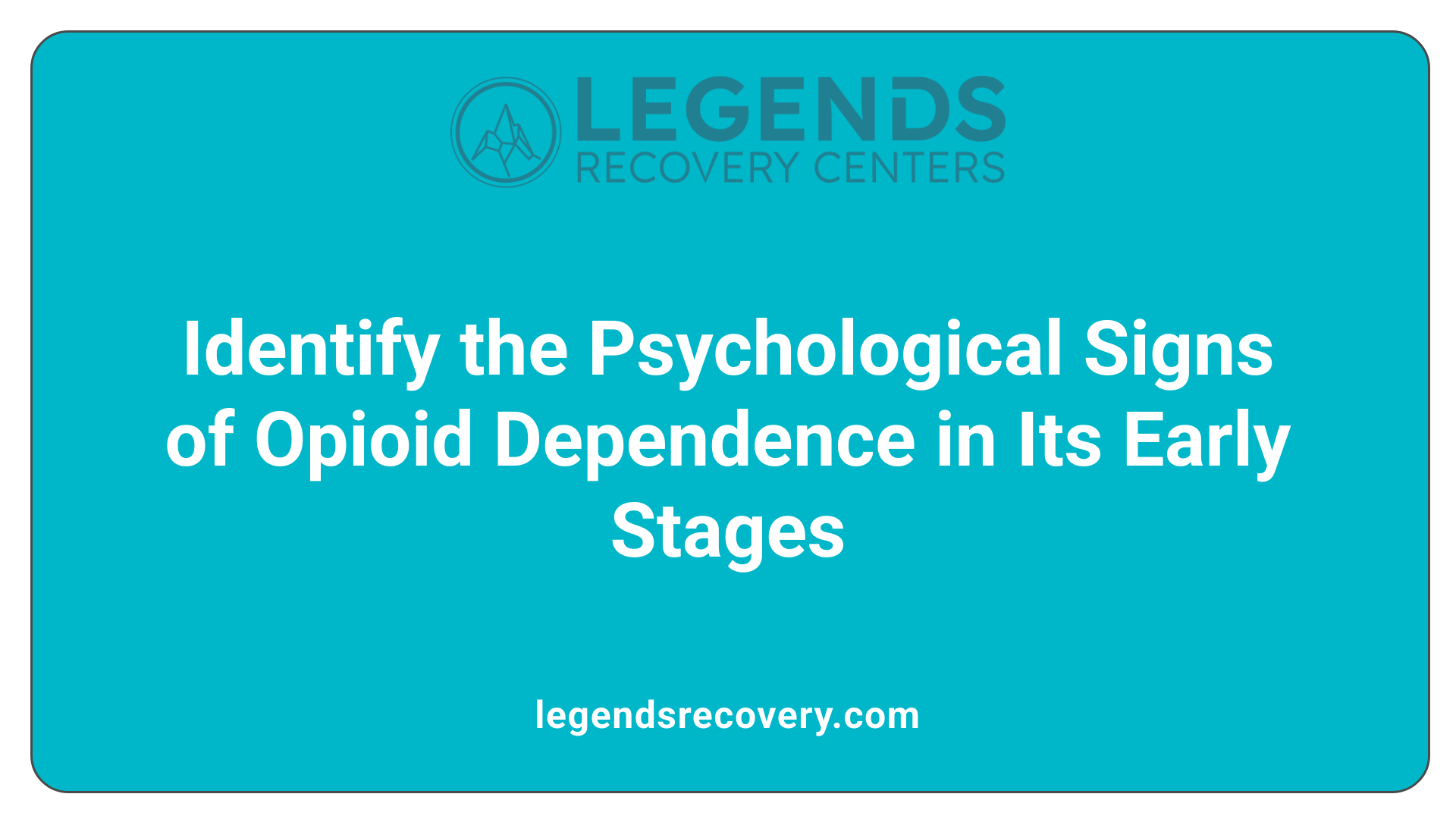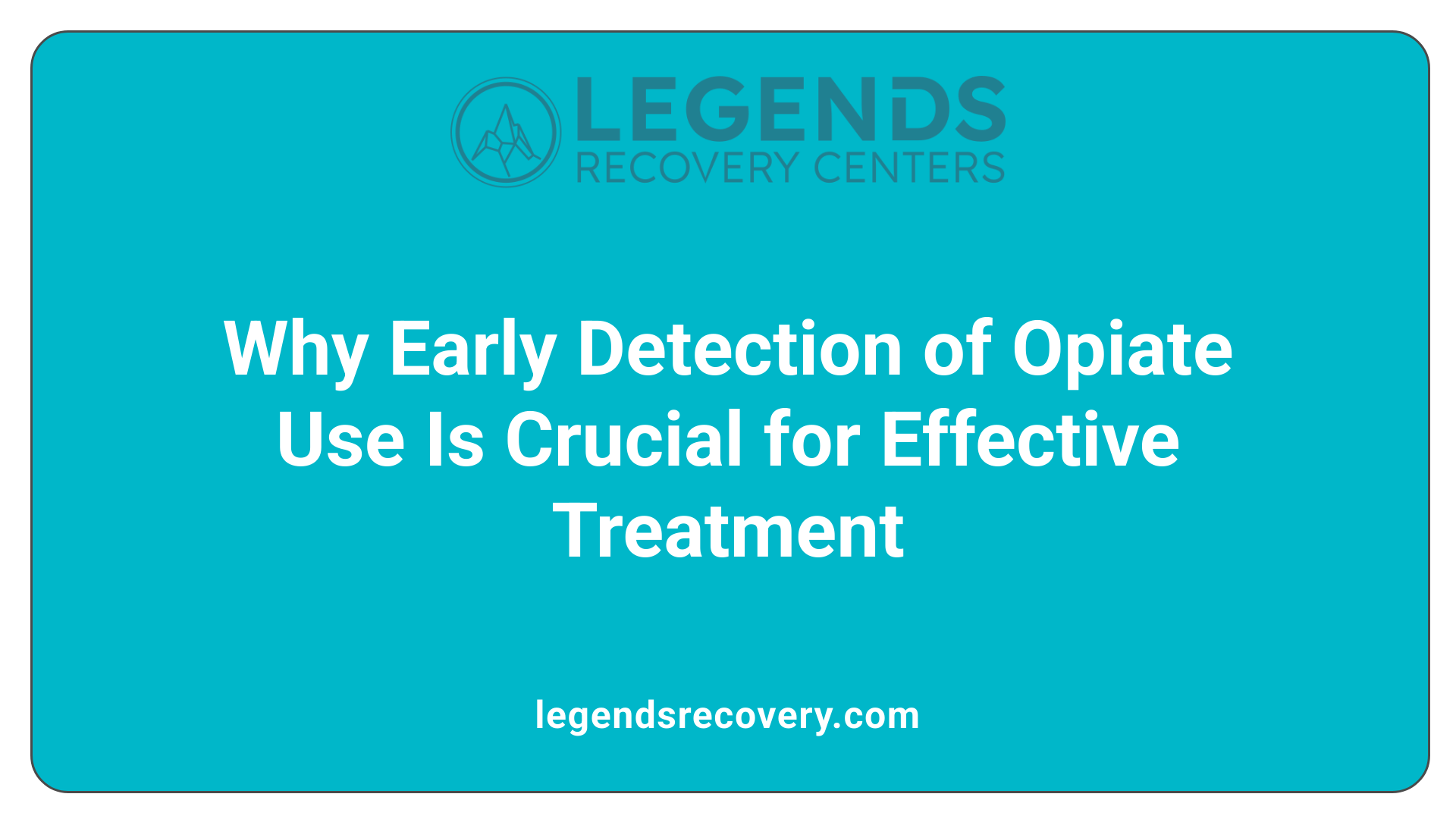Spotting Early Signs of Opiate Addiction: A Guide to Prevention and Help

Recognizing the initial signs of opiate addiction can make a significant difference in timely intervention and recovery. This article explores physical, behavioral, and psychological indicators that signal developing opioid misuse, helping families, friends, and individuals identify potential issues early and seek appropriate support.

Early physical signs of opioid addiction often manifest through observable changes in the body that can signal developing dependence. One of the most noticeable signs is pinpoint pupils, medically known as miosis, which occur due to the narcotic effects of opioids constricting the eye’s pupils. Alongside this, individuals commonly experience drowsiness and a decreased respiratory rate, which can lead to sluggish breathing and fatigue.
Flu-like symptoms are also prevalent during the initial stages of opioid use or withdrawal. These include nausea, excessive sweating, chills, and shaky hands, reflecting the body's physiological response to the drug. Changes in appetite are typical, often resulting in weight loss from neglect of healthy eating habits, or sometimes weight gain if emotional eating occurs.
People attempting to conceal their drug use may wear long sleeves or hide their arms to cover injection marks or track marks on veins. As dependence deepens, withdrawal symptoms such as muscle aches, insomnia, abdominal cramping, and nausea may emerge if use is suddenly reduced or stopped. These physical indicators are often accompanied by behavioral signs such as drug-seeking behavior and intense cravings, signaling early stages of addiction.
Substance use disorder (SUD) begins subtly, with individuals showing a range of behavioral and physical signs before addiction becomes fully developed. Early indicators include mood swings and secretive behaviors, often coupled with neglect of personal and professional responsibilities.
Physically, the person may exhibit dilated pupils or track marks on their skin from injections. They tend to develop a tolerance to the drug, needing higher doses to achieve the same effect, which often results in increased use and persistent cravings.
Behavioral signs include frequent attempts to cut down or control drug use unsuccessfully, spending excessive amounts of time acquiring or recovering from substances, and continuing use despite clear negative consequences. This might manifest as financial difficulties, deterioration in personal relationships, or declining performance at work or school.
Additionally, early signs encompass physical changes such as alterations in physical appearance—like neglected hygiene, weight fluctuations, or skin issues—and behavioral changes such as withdrawal from social activities, secretiveness, or engaging in risky behaviors.
Recognizing these early signals is crucial for intervention, as addressing substance use disorder in its initial stages can significantly improve treatment outcomes and prevent progression to more severe addiction.

Early signs of opioid addiction often manifest through noticeable changes in a person's behavior and habits. One of the most common signs is neglecting personal appearance—such as poor hygiene, wearing long sleeves or hiding arms to conceal injection marks, and suddenly showing a disheveled look.
Individuals may withdraw from social interactions, avoiding family and friends and losing interest in previously enjoyed activities. Mood swings, irritability, and giddiness are frequent, often accompanied by nervousness or paranoia.
A significant indicator is secretive or evasive behavior, especially concerning medication or financial matters. These individuals might go to great lengths to hide their drug use, including stealing or manipulating finances to afford opioids.
Academic or occupational performance tends to decline. People may skip school or work, neglect responsibilities, or perform poorly due to side effects such as drowsiness, poor concentration, and physical discomfort.
Craving the drug and attempting to obtain opioids through risky behaviors, such as illegal purchases or misuse of prescriptions, are common. As tolerance develops, users often increase their doses, leading to more pronounced dependency and withdrawal symptoms.
Recognizing signs of misuse or addiction involves observing behavioral, physical, and emotional clues. Behavioral changes include secretive conduct, such as concealing pill bottles, avoiding discussions about medication, or acting evasive.
Physical indicators involve constricted pupils, unexplained weight loss, flu-like symptoms, poor hygiene, and signs of overdose like slurred speech or respiratory depression.
Emotional signs often involve heightened cravings, mood volatility, irritability, and an inability to control drug use despite negative consequences.
Other red flags include the disappearance of prescribed medication, increased tolerance requiring higher doses, and withdrawal symptoms upon reducing or stopping use.
If these signs are present, consulting healthcare professionals is essential. Resources like the Substance Abuse and Mental Health Services Administration (SAMHSA) offer confidential support and assessment services, helping individuals seek appropriate care.
Early detection of these signs allows for interventions that can prevent worsening dependency and possible overdose, underscoring the importance of awareness among families, friends, and healthcare providers.
Early signs of opioid dependence typically include intense cravings, which are strong urges to use the drug. These cravings often occur because opioids stimulate the brain's reward system by releasing dopamine, creating feelings of euphoria and relaxation. As dependence develops, individuals may also experience withdrawal symptoms when reducing or stopping use. These can include sweating, nausea, vomiting, tremors, watery eyes, and disturbed sleep patterns.
Physically, early dependence is often marked by drowsiness, or conversely, difficulty sleeping. Changes in appetite may result in unexplained weight loss. Flu-like symptoms such as muscle aches, chills, and diarrhea are common physical signs. Behavioral changes are also significant; these include social withdrawal, irritability, mood swings, and decreased interest in hobbies or responsibilities. Some may exhibit secretive behaviors, such as hiding arms to conceal injection marks or stealing to acquire drugs.
Physiological signs include pinpoint pupils and a decreased respiratory rate, signaling the body's adaptation to the drug. Recognizing these early indicators is crucial for timely intervention, preventing progression to more severe dependence or addiction.
Recognizing an overdose is vital for immediate intervention. Common signs include unresponsiveness, slow or irregular breathing, and pinpoint pupils. The person may have pale or clammy skin, and their lips or fingernails can turn blue or purple, indicating a drop in oxygen. Other indicators are extreme drowsiness, limp body, vomiting, choking or gurgling sounds, and a heartbeat that is very slow or stops altogether. This combination of symptoms—known as the overdose triad—requires urgent action.
If you suspect an overdose, the first step is to call emergency services (911). Administering naloxone, a medication that can rapidly reverse opioid effects, can save lives. Support the person’s breathing with rescue breathing or CPR until professional help arrives. Immediate response is crucial because timely treatment can prevent brain damage or death.
Early detection of opioid addiction significantly improves the chances of successful treatment. Recognizing the signs, like persistent cravings, increasing doses, behavioral changes, and physical symptoms, allows for prompt medical and psychological intervention.
Using diagnostic tools such as the DSM-5 criteria can help healthcare providers identify substance use disorder early. Regular urine drug screenings can detect ongoing opioid use, even if the person denies ongoing use.
Family members and friends hold an essential role in early detection by observing behavioral shifts such as secretive actions, neglect of responsibilities, or withdrawal from social activities. Resources like SAMHSA’s National Helpline are valuable for seeking guidance and support for those at risk.
Early recognition ensures that individuals receive appropriate treatment before their condition worsens, reducing the risk of overdose, health deterioration, and social consequences. It paves the way for interventions like counseling, medication-assisted treatment, and support groups, which are crucial for recovery.
Family members may notice various indicators of opioid misuse. These include physical signs such as bloodshot eyes, poor hygiene, weight fluctuations, and needle marks. Behavioral signs might involve secretive or erratic actions, withdrawal from family and friends, neglecting responsibilities, and financial problems.
Additionally, behavioral changes like mood swings, depression, hostility, sleeping or eating pattern shifts, and declining academic or work performance can signal substance issues. Physical cues also include a distinctive smell of smoke or burnt odors, tiredness, and evidence of intoxication such as slow movements or unusual dizziness.
Alterations in behavior are often among the earliest signs of opioid misuse. Watch for sudden secrecy, avoiding family or social activities, deteriorating performance at work or school, and neglect of self-care. Increased irritability, mood swings, and social withdrawal are common.
Individuals may also exhibit risky behaviors like unprotected sex, driving under influence, or borrowing money frequently. In teens and young adults, changes such as acting distant, hostile, or sullen are red flags.
Physical signs include constricted pupils, slowed respiration, drowsiness, and inability to focus. Long-term use can cause weight changes, skin issues, and visible injection marks on arms or legs. Flu-like symptoms such as nausea, vomiting, sweating, and yawning are common during withdrawal.
In overdose situations, signs escalate to unconsciousness, shallow or no breathing, and pale, clammy skin. Recognizing these physical cues prompts urgent medical intervention.
Repeated requests for early refills, lost or stolen medication, and seeking opioids from multiple healthcare providers are warning signs of misuse. Craving urges and preoccupations with obtaining opioids often dominate the individual's thoughts.
Increased dosage over time to achieve the same effects—known as tolerance—is common. These behaviors highlight the progression toward dependence and the need for comprehensive assessment and treatment.
Tolerance occurs when larger amounts of opioids are needed to produce the initial effect. This phenomenon results from the brain adapting to the drug's presence, leading users to escalate their intake.
Signs include increased doses, withdrawal symptoms when not using, and the inability to feel the same level of euphoria as before. Tolerance contributes significantly to the cycle of addiction and increases overdose risk.
| Sign/Symptom | Description | Additional Details |
|---|---|---|
| Craving | Strong desire or urge to use | Often persistent and difficult to control |
| Physical dependence | Withdrawal symptoms on discontinuation | Includes nausea, chills, sweating |
| Tolerance | Need for increased dose | Reduced euphoria, increased use |
| Behavioral changes | Isolation, neglect | Decline in responsibilities, secretive behavior |
| Physical appearance changes | Weight fluctuations, hygiene neglect | Loss or gain in weight, wearing long sleeves to hide marks |
| Risky use | Using in hazardous situations | Driving under influence, unsafe activities |
| Continued use despite harm | Persisting in drug use | Social, legal, or health problems |
| Attempts to stop | Unsuccessful efforts | Cravings, withdrawal symptoms |
Recognizing these signs early can facilitate effective intervention—saving lives and improving recovery outcomes.

Identifying opiate addiction early is essential for effective treatment and better recovery outcomes. When signs such as drug-seeking behavior, social withdrawal, failed attempts to cut down, or escalating dosages are noticed, prompt action can help prevent serious health, psychological, and social complications.
Healthcare professionals use diagnostic tools like the DSM-5 criteria to evaluate the presence of opiate use disorder. Regular urine drug screenings can also detect early signs of misuse, cravings, or increasing tolerance. Recognizing these indicators early allows for immediate intervention, which often results in less severe dependence and health issues.
Support services such as SAMHSA’s National Helpline offer immediate resources, counseling, and referrals to treatment facilities. Family involvement and open discussions about drug use are also key in early detection, especially in adolescents and young adults.
Early intervention ensures the initiation of appropriate treatment plans that include medical, psychological, and social support. These strategies aim to reduce cravings, manage withdrawal symptoms, and address underlying psychological factors like depression or trauma.
Overall, catching signs of opiate misuse early helps prevent escalation, reduces risk of overdose, and enhances the chances of long-term recovery.
Potential opiate misuse or addiction often presents through various behavioral and physical signs. Behavioral changes are prominent indicators and include secretive conduct, withdrawal from social activities, neglect of responsibilities at work or home, and sudden mood swings or irritability. Physical signs can be equally revealing, such as constricted pupils, unexplained weight loss or gain, poor hygiene, and frequent flu-like symptoms like nausea and sweating.
Signs that may indicate increasing tolerance include requesting higher doses or using medications more frequently than prescribed. Disappearance of prescribed opioids and inconsistent medication refills might also raise suspicion.
Emotional symptoms are equally telling; these include intense cravings, feelings of unease or anxiety, and difficulty reducing use despite serious consequences. Recognizing these signs early can facilitate timely intervention.
If you or someone you know exhibits these behaviors or symptoms, consulting healthcare professionals can be a crucial step. Confidential resources, such as the Substance Abuse and Mental Health Services Administration (SAMHSA)’s National Helpline, offer assessment, support, and guidance tailored to individual needs.
Recognizing the signs of opiate addiction early is essential for preventing serious health complications, overdose, and long-term dependency. Families, friends, and individuals should stay vigilant for behavioral and physical changes such as withdrawal symptoms, drug-seeking behaviors, and alterations in appearance. Timely intervention, supported by comprehensive treatment options and harm reduction strategies, can dramatically improve recovery prospects. Medical professionals and community resources play a vital role in providing guidance, education, and treatment to those affected. By raising awareness and taking proactive steps, communities can combat the opioid crisis more effectively, saving lives and fostering healthier futures for affected individuals.